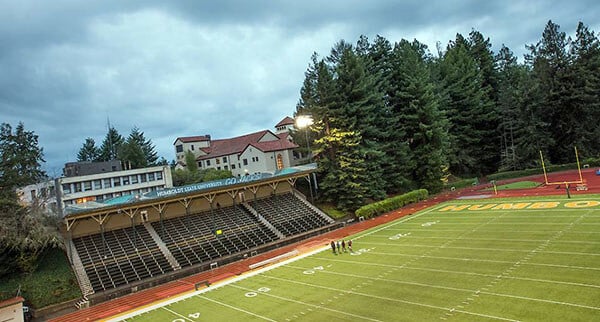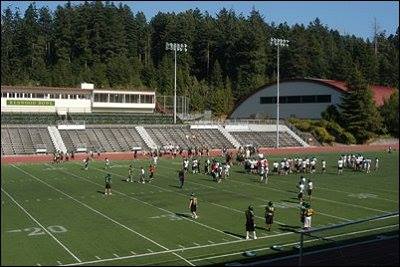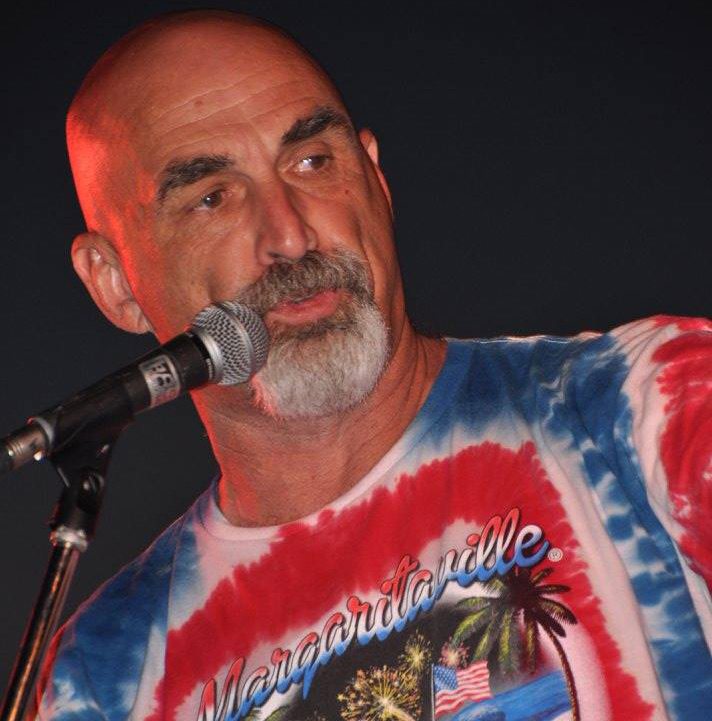
Photo by Mike Wolcott
We’re driving to the coast Saturday morning, taking the same route I did right around this time of year back in 1983, when I first interviewed for a sportswriting job at the Eureka Times-Standard.
That first drive was one I’ll never forget; I remember stopping somewhere along the Trinity River for a few minutes and just enjoying the beauty of the drive, feeling like I was on my way to someplace very, very special. And I was. I still get the same feeling every time I go over there.
This trip, though, is going to be bittersweet.
We’re going to watch Humboldt State’s final, last-ever, home football game at beautiful Redwood Bowl. Just typing those words almost feels like I’m reporting a criminal act; I could go on and on about how the university messed with their funding approach and are needlessly doing away with one of truly unique college football programs in the entire country. (And this WILL hurt the university for years to come. Make no mistake.)
Honestly, though, the Lumberjacks’ brand of football as I knew it vanished long ago, when all of the other teams in the old Northern California Athletic Conference – Chico State, Sonoma State, Cal State Hayward and San Francisco State – pulled the plug on their programs. Humboldt has been the last NCAC team standing for a long, long time. And now it’s going to end.
I got to cover more than my share of 49ers games in the Bay Area and I had a front-row seat to the most dominant (pre-De La Salle) high school team in the North State – Corning, which won seven consecutive section titles in the 1980s.
But I had as much fun covering Humboldt State football as anything I ever did. It felt like my first taste of “big-time” sportswriting; I had my own room in the press box area, they had people who kept the stats FOR me and, good God, they even had sandwiches and sodas at halftime!

They didn’t award scholarships in those days. It was college football in its purest form, played in as beautiful and natural of a setting as you’d find anywhere in the country.
All those nights watching the Jacks play on that field in the mist, with players from all over Humboldt County and the rest of the state lined up against (usually) superior talent pools, was unlike any other experience I had.
[pullquote]The Marching Lumberjacks Band. The official fight song, “Drive On Humboldt,” which includes the lyrics “We must have a victory for the Green and Gold,” and yet, week after week, the band would change the words…[/pullquote]
wandered off for a play.
The “Green Chain Defense.” The “Dolby System,” powered by a quarterback named Rodney Dorsett who, to this very day, was the most elusive runner I’ve ever seen on a football field.
Tim Parsons standing behind the end zone, camera in hand, a couple hours after we’d “warmed up” for the game with a couple of rounds at the Sidelines Sports Bar. Donell Sand. Corny Ross. William Williams (whose nickname, of course, was Bill Bills). Richard Ashe. Paul Wienecke. David Booth. Eddie Pate. R.W. Hicks, the ever-present offensive line coach. Tom Trepiak (and later Brian Dangerfield) in the press box, making my job ridiculously easy.
And the band. The Marching Lumberjacks Band. The official fight song, “Drive On Humboldt,” which includes the lyrics “We must have a victory for the Green and Gold,” and yet, week after week, the band would change the words to “We must have a piece of ass for the Green and Gold” and I swear, 90 percent of the crowd never seemed to notice. (Or maybe they were just too busy singing along to notice.)
I remember thrilling wins over smaller schools, competitive battles against most of the NCAC and the occasional moment of glory against UC Davis, the true bastards of the conference that ran up the score like no team I’ve seen in any sport, any year, at any level of competition, before or since. Like, the time they led Humboldt 20-2 with two minutes to go, took the ball on their own 30, kept passing, called three timeouts in the final 2 minutes and scored on the final play of the game to make it 26-2. And THEN they went for two!
“Trying to get an impressive win to impress the playoff committee,” was Jim Sochor’s explanation.
Next time Humboldt played Davis in Arcata, on Humboldt’s first punt of the night, the Davis receiver called for a fair catch. A Humboldt player named Derek Mallard raced down the field, right arm extended, unleashed a perfectly timed chin-high haymaker and absolutely cold-cocked the receiver while the ball was still 10 feet in the air, tearing the helmet right off his head and knocking him 10 yards backward.
The message was undeniable. It was the loudest, most sustained ovation I ever heard at a Humboldt State football game.
In a just world, there would be a similar reaction to what the administration did to this football program. And I fully expect the Marching Band to sneak in some sort of message during its halftime show. (This is the same band that once ended a Davis halftime show with a guy dressed as a Davis football player prodding a goat in the rear end with a fake wooden appendage, after all. I sat in the booth next to Humboldt State’s president at the time. Now THAT was an expression.)
No telling what will happen – there never was in those days – but, I can count on this: my family will get to breathe the air, and see the redwood trees behind the end zone at the most beautiful Division II setting in the country, and for a few hours experience what I got to see for so many years. God, I’m going to miss it.
Life marches on. Drive on, Humboldt.
— Mike Wolcott

